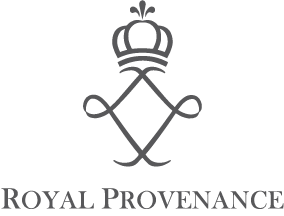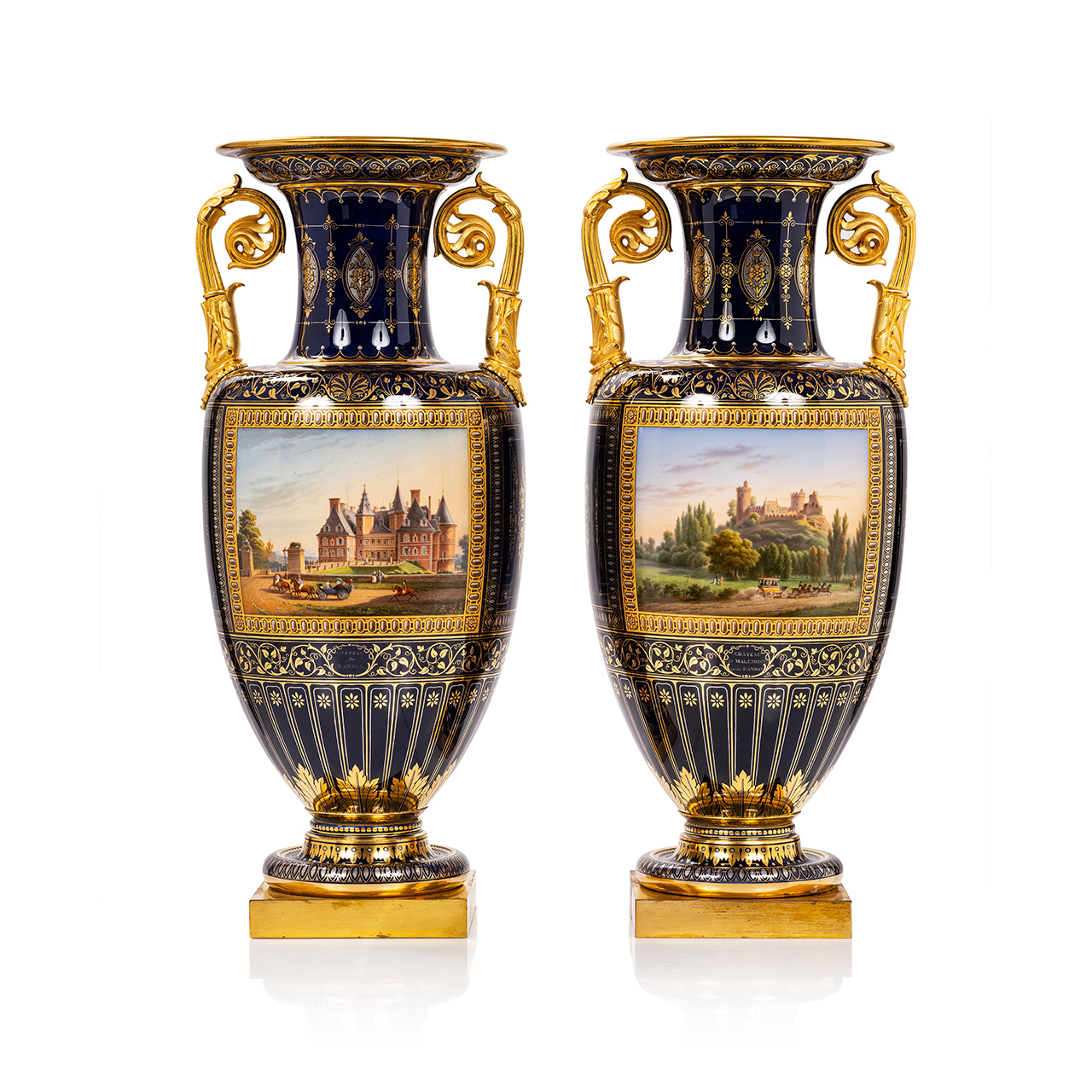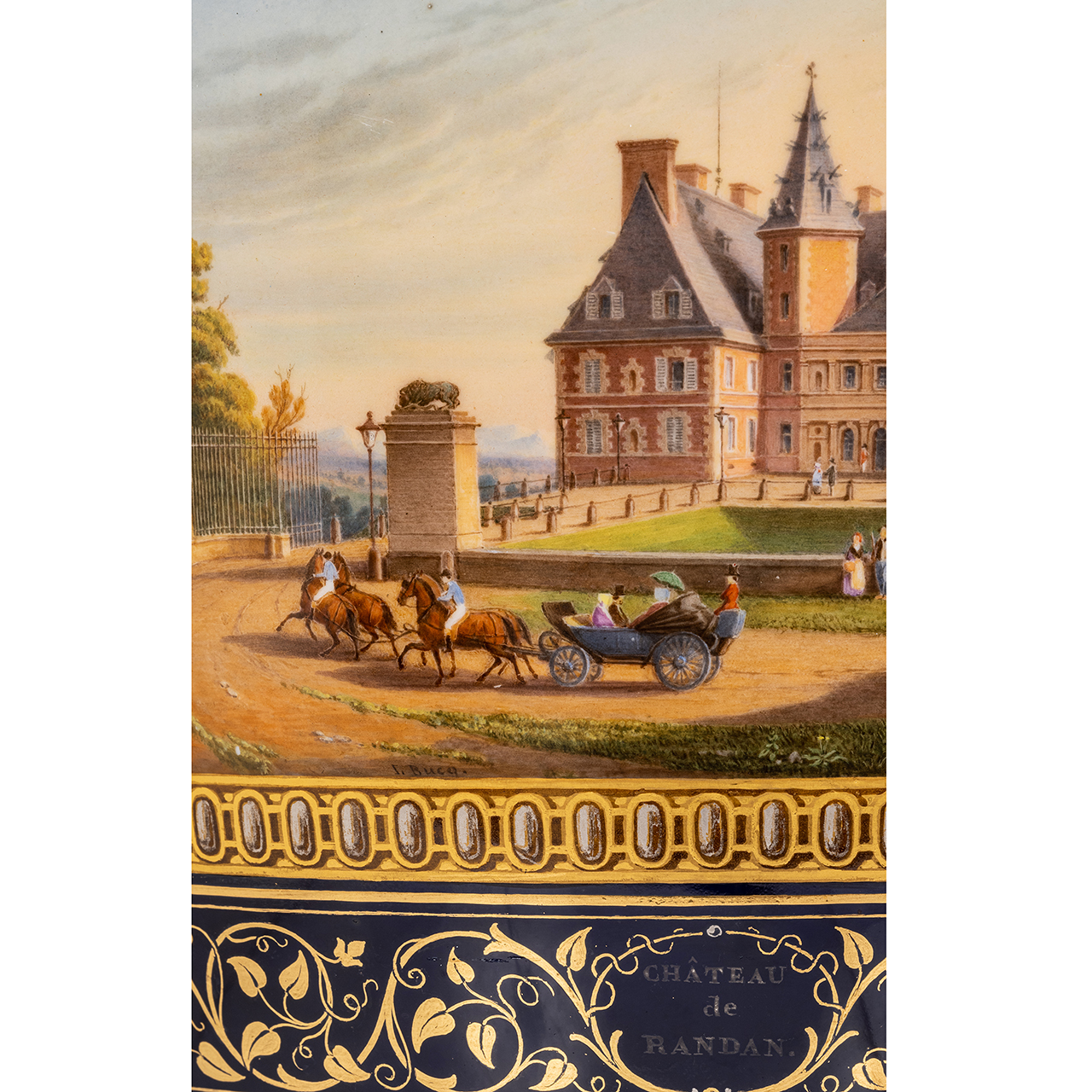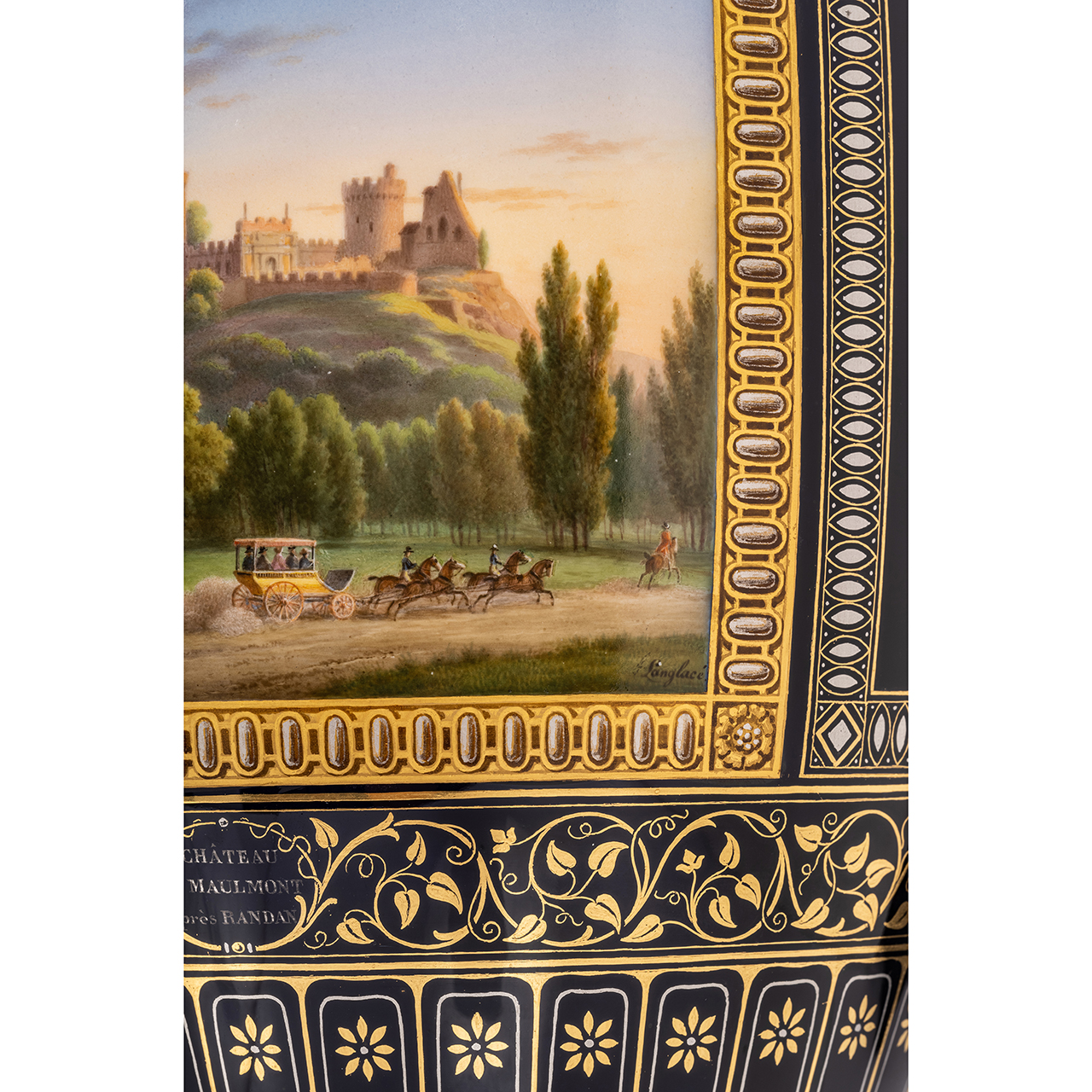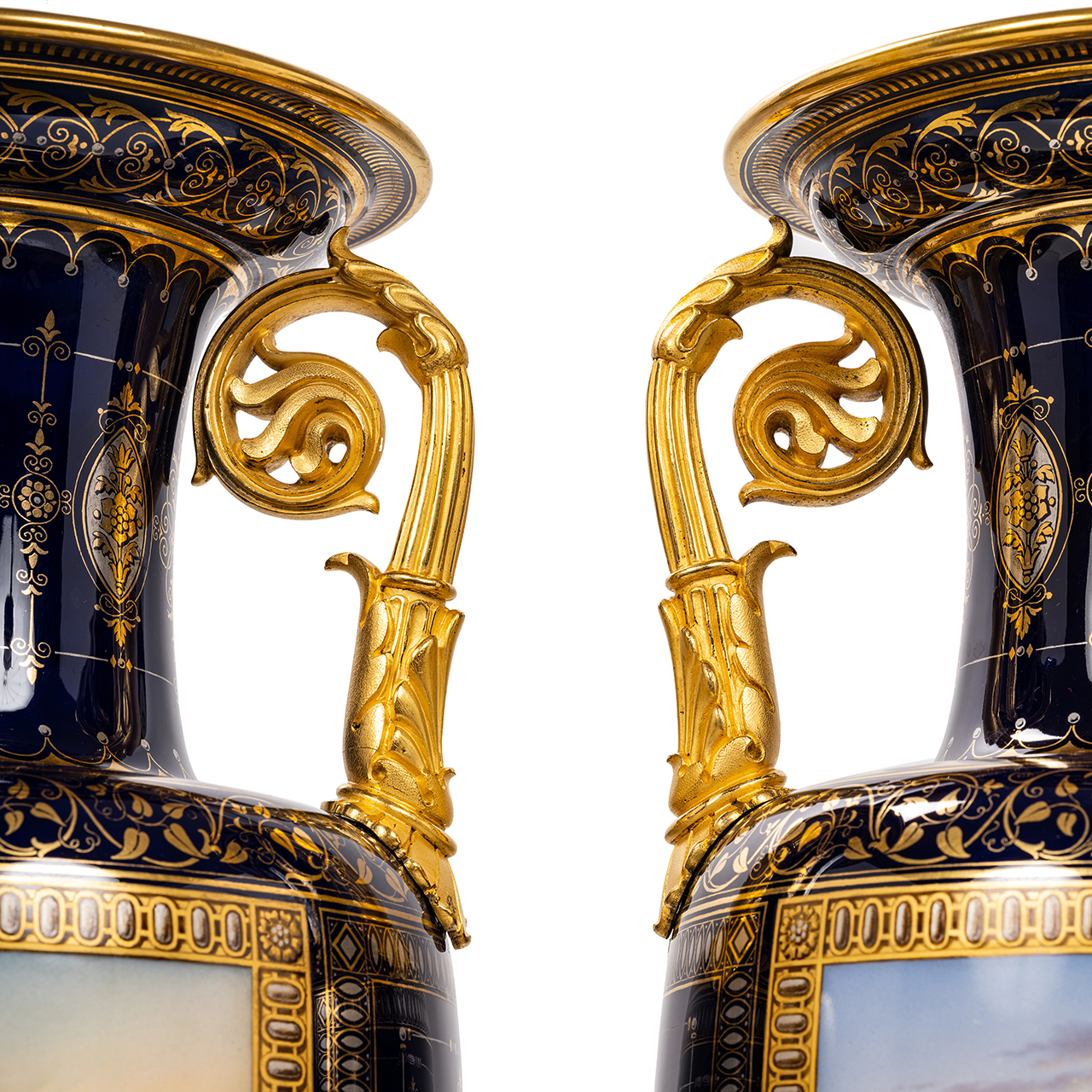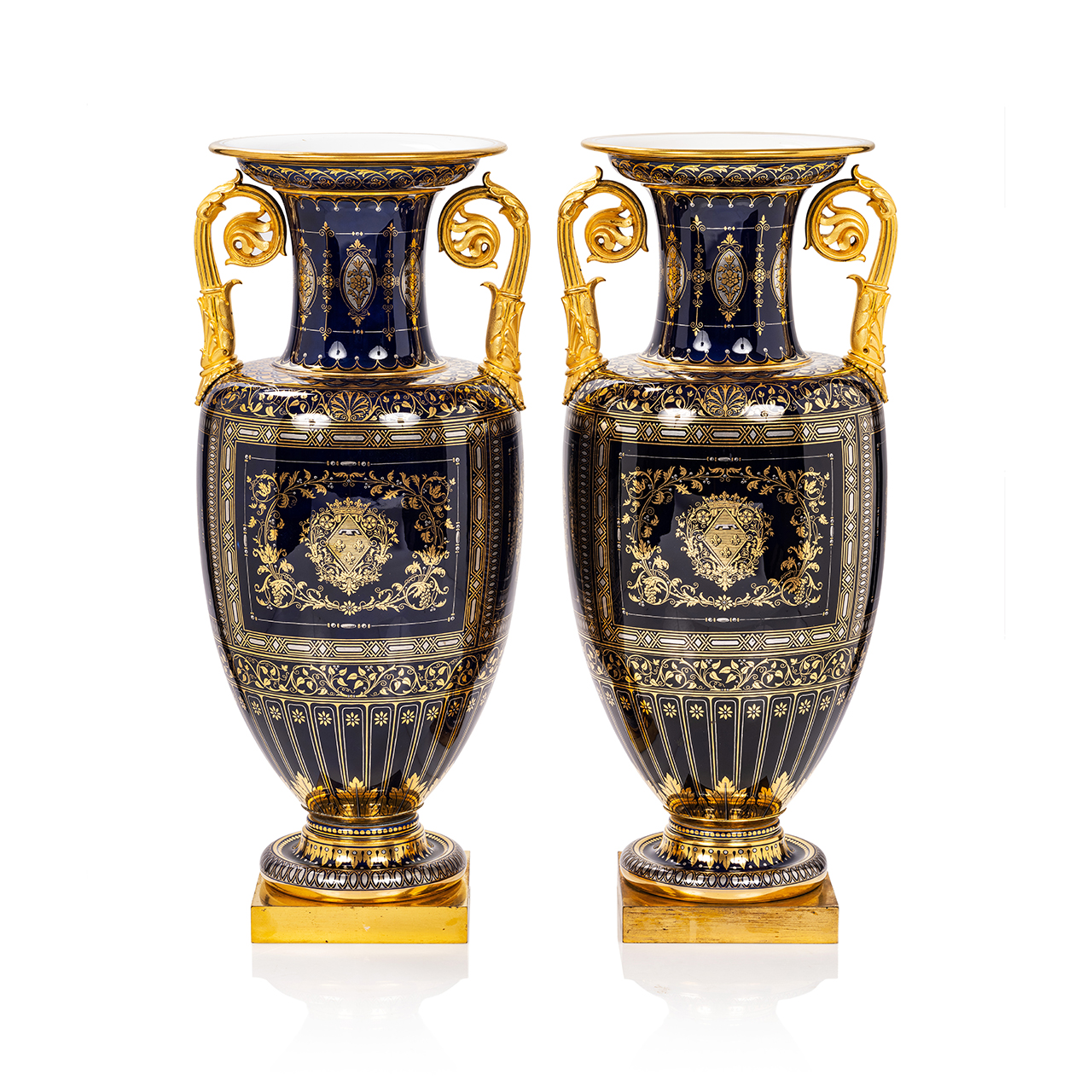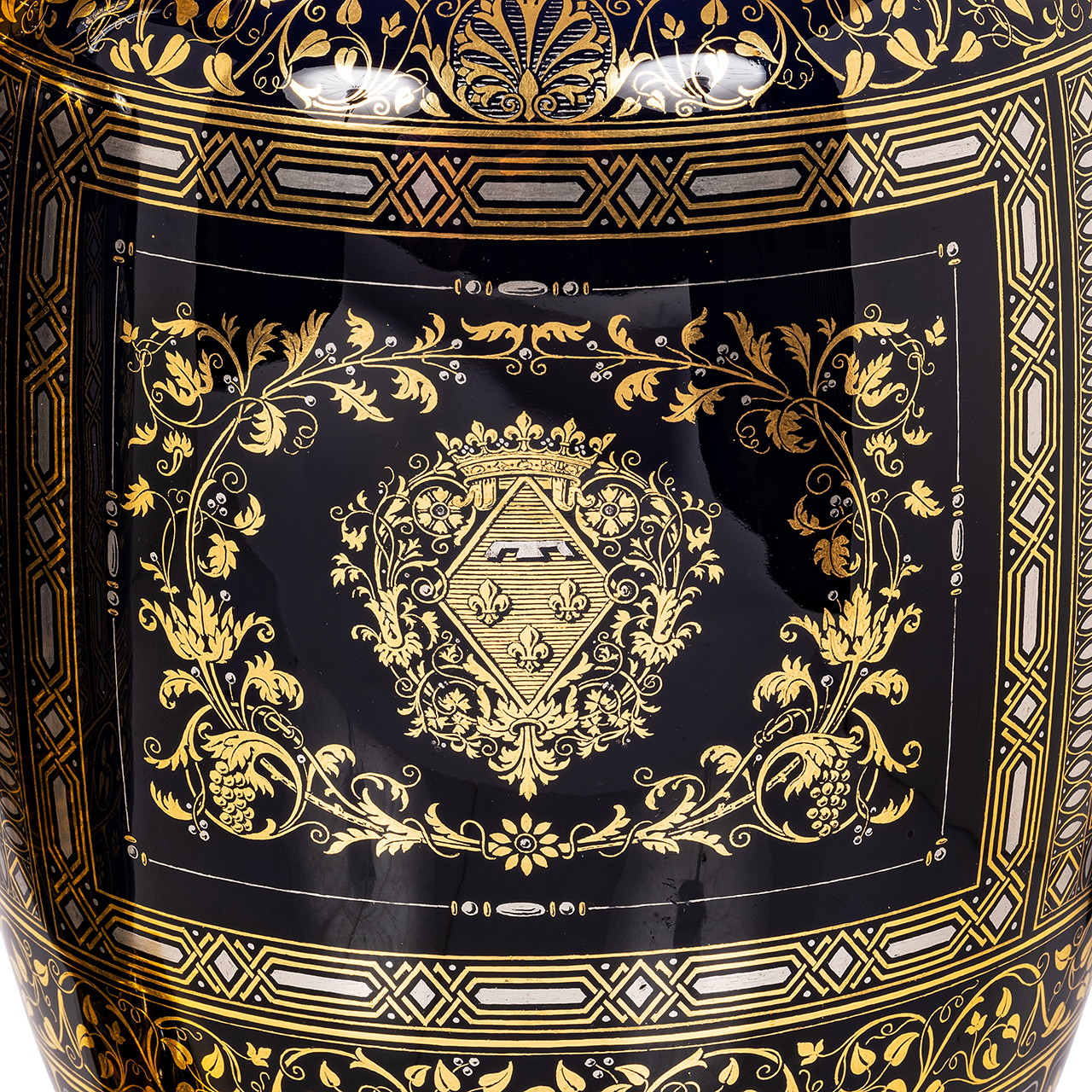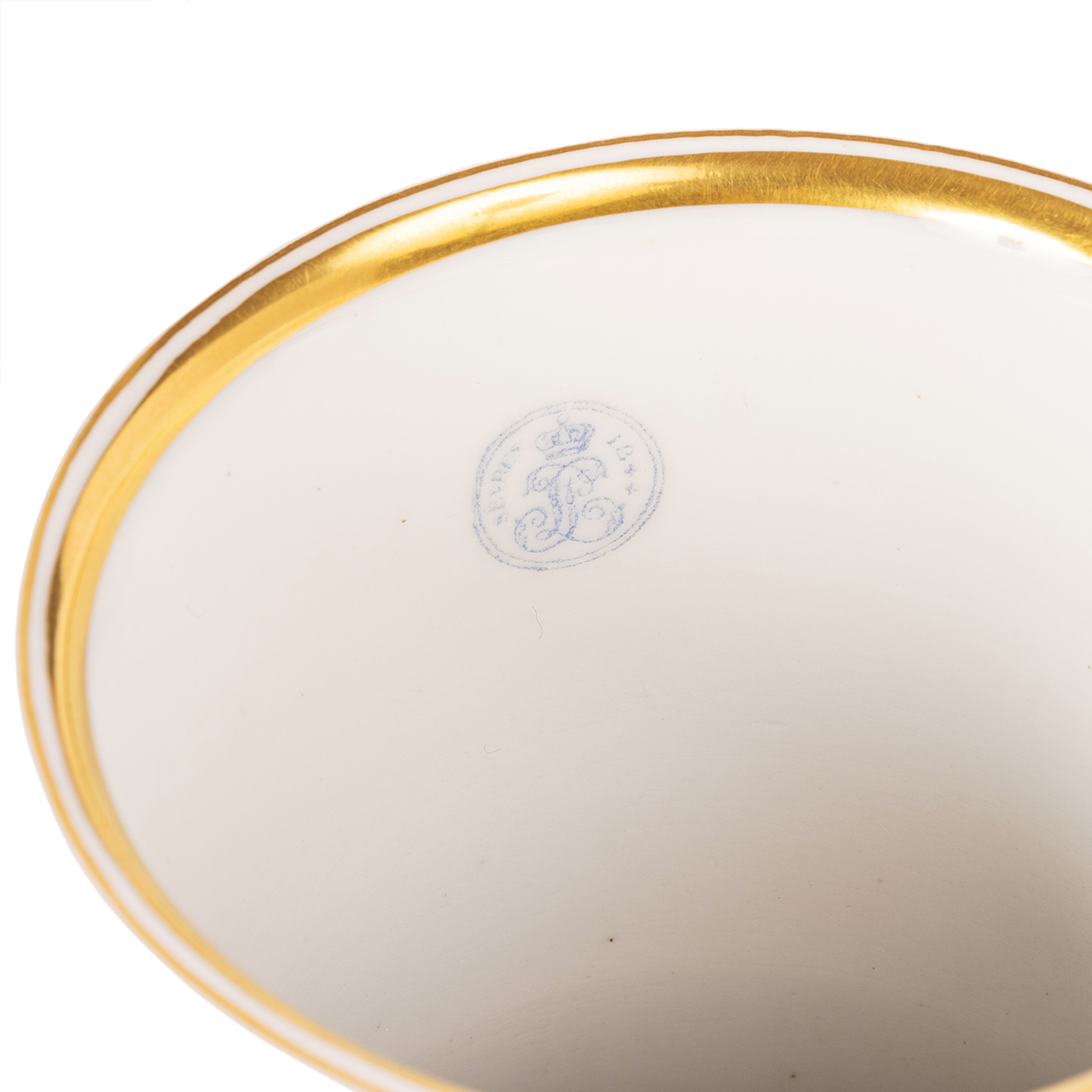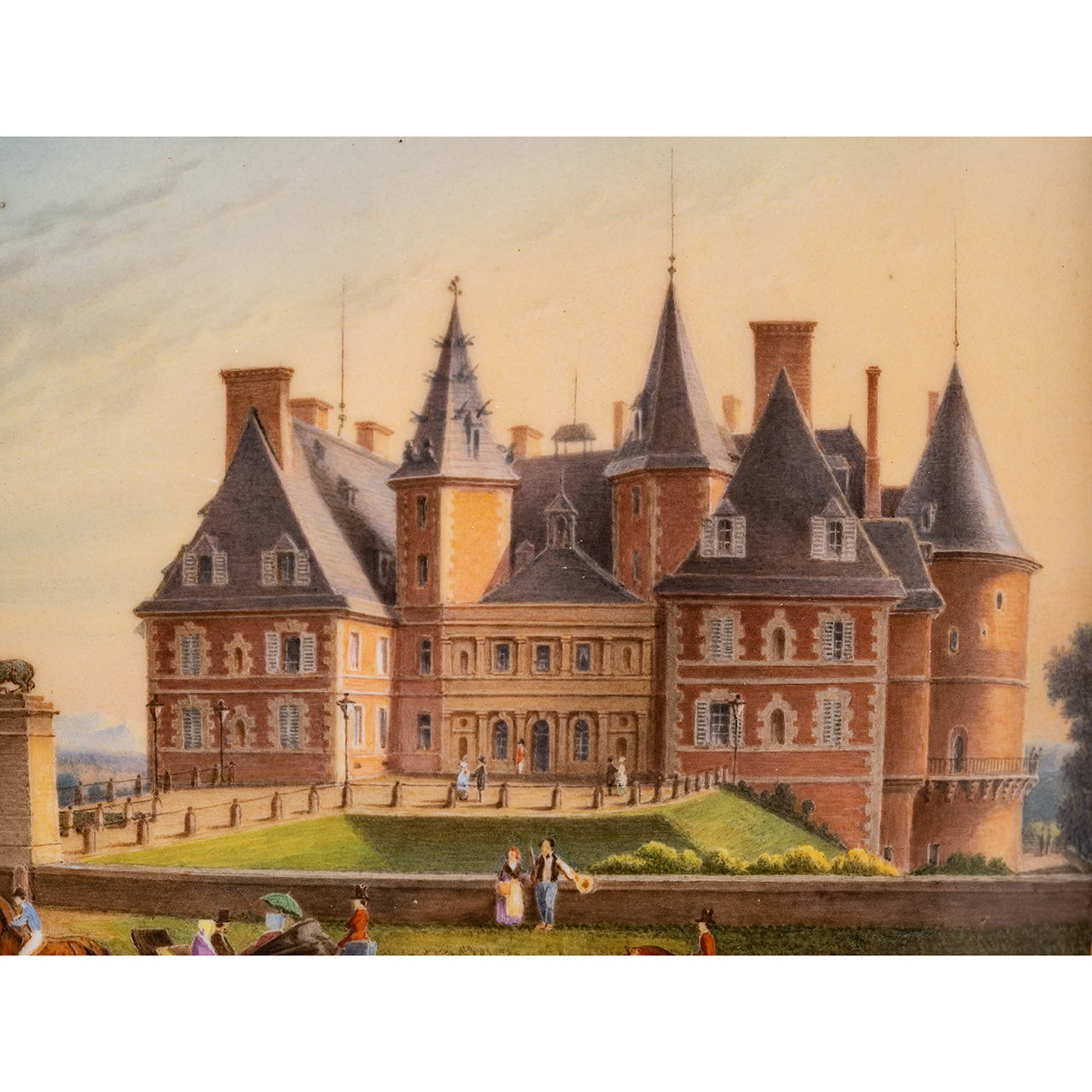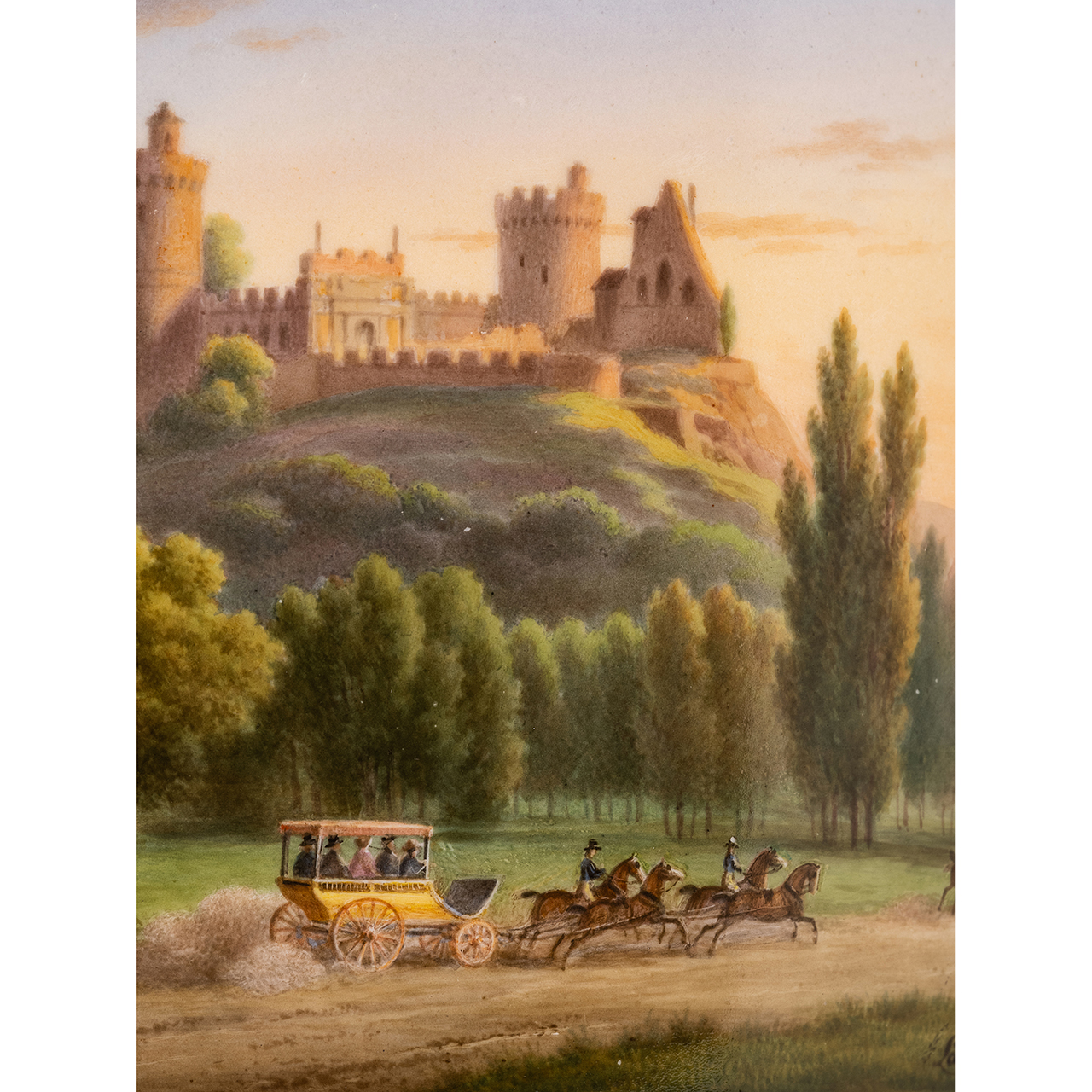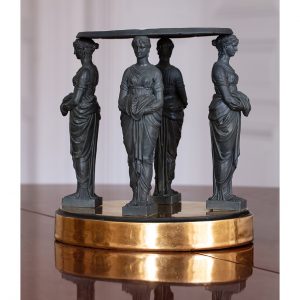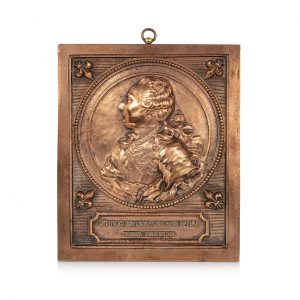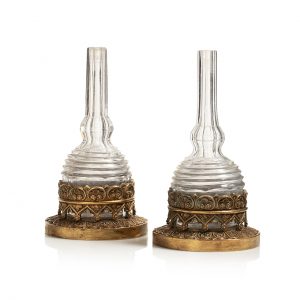Pair of hard-paste porcelain vases of "Etruscan carafe" 2nd size shape, with a "beau bleu" background, the side handles in chiseled gilt-bronze with winding handles ornate with palms and acanthus leaf motifs, decorated with animated polychrome views in rectangular reserves captioned at the bottom, one depicting the "Château de Randan", the other the "Château de Maulmont near Randan", in a rich entourage of friezes and ornaments in gold and platinum. On the back the coat-of-arms of Princess Adélaïde Louise d'Orléans, known as Madame Adélaïde (1777-1847), younger sister of King Louis-Philippe. They rest on a square base in gilded bronze.
Sèvres Royal Manufactory, 1844.
Blue stamped marks with King Louis-Philippe's cipher dated 1844.
The painting of the Château de Maulmont is signed lower right “Langlacé” (Jean-Baptiste Gabriel Langlacé, painter at Sèvres from 1806 to 1845), that of the Château de Randan is signed lower left “L. Bucq(uet). (Louis Léon Bucquet, painter at Sèvres from 1842 to 1848).
Very good condition, restorations to one vase.
H. 43 x W. 19 cm.
- These vases entered the Sèvres sales store on December 31, 1844 (Arch. Sèvres, Vv4, 34-13), with a manufacturing cost of 662 frs/each. Initially intended for Princess Adélaïde of Orléans, sister of King Louis-Philippe, they were finally sold to a certain Mister Fletcher on July 19, 1845 (Arch. Sèvres, Vz6, 198), purchased for 1,500 francs the pair.
- With Jean Lupu, Biennale des Antiquaires, Paris, 2002.
- Private collection, France.
A pair of Sèvres porcelain Medici vases decorated with views of the castles of Randan and Maulmont, dated 1845 and painted by Jules André, delivered to Louis-Philippe in exile in August 1850, is kept at the Musée Condé de Chantilly, inv. OA 1231 and 1233.
T. Préaud, Porcelaines du musée Condé à Chantilly, Somogy, 2005, pp. 62-64 (quoted p. 62).
Our pair of Etruscan carafe vases are a superb example of the production of Sèvres porcelain under the direction of Alexandre Brongniart. Initially made for the sister of King Louis-Philippe, as evidenced by her coat-of-arms on the reverse of each of these vases, they were bought in cash by a certain Mr. Fletcher, unidentified but probably a wealthy British businessman as commonly happens at Sèvres.
The term "Etruscan", as a designation of a form, appeared in 1769 in the decorative arts following the attributions of pieces found in Italy in the 18th century. The “Etruscan carafe” shape at Sèvres is a classic form that dates back to the end of the 18th century. It is inspired by Etruscan examples from the collection of antique vases donated by Dominique Vivant-Denon to the Sèvres factory, brought back from his transalpine travels. Often used under the First Empire, it was reworked and repeated several times, its form particularly suited to the painting of landscapes and portraits fashionable in the 19th century.
The castles of Randan and Maulmont belonged to Adélaïde d'Orléans. Randan was of particular importance to the princess; following her acquisition in 1821, it had many improvements made there by the architect Pierre-François-Léonard Fontaine. On this subject she was in rivalry with her brother, who owned the Château d'Eu. Louis-Philippe, then Duke of Orléans, took a close interest in this project and did not hesitate to recommend arrangements. Maulmont Castle, located a few kilometers from Randan, was its meeting place for hunting.
The joint use of gold and platinum is extremely rare for porcelain pieces, particularly at Sèvres. Thanks to the archives of the Sèvres factory consulted, we know that the painting of the ornaments was carried out by Ducadre, and that their gilding was carried out by François Vaubertrand (gilder active at Sèvres, 1822-1848).
